|
Home >> synthetic diamonds >> monocrystalline diamond plate |
As the hardest element on earth, nothing is fitter than a diamond to cut and perfectly shape another. It is a powerful tool used to cut and shape other metals too. With unique internal structures, diamond cutting tools play a major role on how polished a diamond will look after the cutting process. But since natural diamonds are pretty expensive, using synthetic diamond has now become more ideal to use as cutting and sharpening tools. One of the major reasons for developing the diamond products was to replace the natural diamond with synthetic diamond. The reason for the replacement was because the natural diamond was either scarce or irregular in supply. Usually, stones that come from uneven areas may fail in the long run, because of the cleavage. |
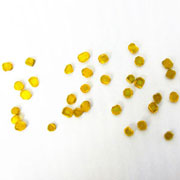 |
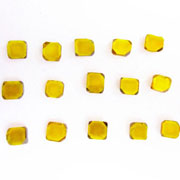 |
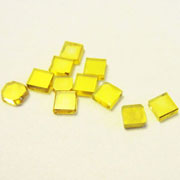 |
 |
| monocrystalline diamond plate |
monocrystalline diamond plate |
monocrystalline diamond plate |
monocrystalline diamond plate 4mm |
 |
 |
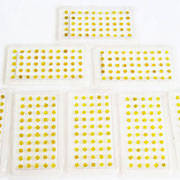 |
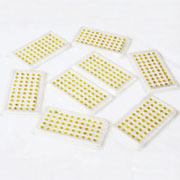 |
| monocrystalline diamond plate |
monocrystalline diamond plate |
monocrystalline diamond |
monocrystalline diamond |
|
What is a Monocrystalline Diamond?
To understand what a monocrystalline diamond is, you have to understand its crystal structure first. On simple terms, monocrystalline diamonds are synthetic diamonds with just one big crystal structure unlike the polycrystalline variety with several structures. Unlike natural diamonds, synthetic monocrystalline diamonds are more uniform and are purer in form. This type of diamonds is also characterized by its yellow color. |
Using a monocrystalline diamond, diamond cutting and sharpening tools are able to provide consistency for each diamond crystal while preventing the surface from breaking apart. The high quality and micronized super abrasive feature of microcrystalline diamonds also allows it to move at greater and better sharpening speeds. As a cutting tool, they are proven to perform extremely well – surface finishing are improved and rapid tool changing can be easily achieved. |
Diamond Machining
Diamond machining is perhaps one of the most complex and hardest things to do – every angle and single cut requires high precision. Accuracy at this point can only be achieved by using a wide range of precision machining products. Besides, diamonds cut to perfection will always require different tools for grooving, faceting, turning, edging, plunging, turning, boring, milling, facing, drilling, engraving, and more. |
 |
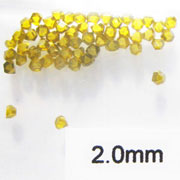 |
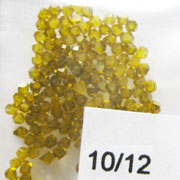 |
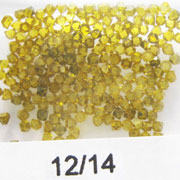 |
| synthetic diamond grits 2.2mm |
synthetic diamond grits 2.0mm |
synthetic diamond grits 10/12 |
synthetic diamond grits 12/14 |
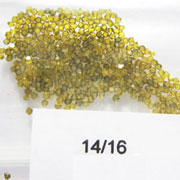 |
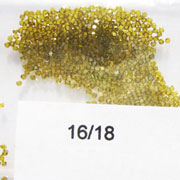 |
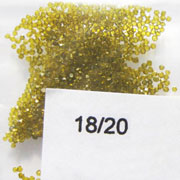 |
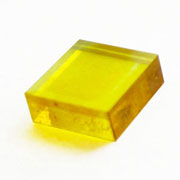 |
| synthetic diamond grits 14/16 |
synthetic diamond grits 16/18 |
synthetic diamond grits 18/20 |
monocrystalline diamond plate 4*4mm |
|
Are monocrystalline diamonds only used for jewelry?
Though the most popular use of monocrystalline diamonds are jewelry construction, a lot of manufacturing sectors have also discovered the supreme finish and accuracy that monocrystalline diamonds can provide. Once reserve for crafting jewelry, monocrystalline diamonds have now found its way to other industries as well because of its cutting edge precision and versatile use. |
Some of the industries that make use of them today are:
• Jewelry – monocrystalline diamonds are perfect for making rings as well as chains for making necklaces and bracelets. Usually, the process involves the use of turning tools like form tools and short and long internal turning tools. Several tools can also be used to make cuts and intricate designs on jewelry as well as separate diamond tools for stone setting. |
• Medicine – laser optics, medical imaging, and device, as well as opthalmics are just a few of the medical industries which use monocrystalline diamonds to supply the need for high precision which is a strict requirement for the medical industry. |
• Aerospace, Automotive, and Aviation – a lot of engine parts needed in aerospace, automotive, and aviation industries are supplied with the use of monocrystalline diamond cutting tools. Most of the engine parts are designed, engineered, and manufactured to produce high precision and high strength use.
|
• Ophthalmics – whether it’s contact lenses or intraocular lenses, a variety of monocrystalline diamond tools are the perfect tools to manufacture any or both of the two. |
• Other industries that also use monocrystalline diamonds are display technology, electro optics, metal optics, electronics, photonics, polygon mirrors, precision plastic machining, micro lens array and pattern machining. Other applications also include machining functional surfaces, ceramics, metals, and wire dies, as well metallography and nanotechnology. |
The Advantages of Using Monocrystalline Diamond
Because monocrystalline diamonds are usually made up of single grains with sharp edges, you will be able to come up with cleaner and more efficient cutting results using them. Monocrystalline diamonds are also ideal for longer wear and faster sharpening. Aside from that, diamond stones are more likely to be used when sharpening pointed or very small tools. Because of their unbreakable strength, diamonds are more likely to remain flat even when subjected to fast cutting processes. They can also be easily cleaned with water – which is the same liquid most diamond machinist use when sharpening. You have to be aware though that monocrystalline diamonds are sized differently for various cutting and polishing applications. Make sure that you choose one according to the applications you’re using it for and the results that you want to see. |
While it is true that diamond stones are more expensive, synthetic monocrystalline they might be, but still choosing diamond stones as a cutting tool is a good investment because they are easy to use, durable, and is very flexible to be used with plenty of applications. |
|
We export impregnated and surface set diamond core bits, diamond casing and casing shoe bits, reaming shells, core barrels, drilling rods, overshots to world wide countries, such as USA united states, Germany, UK united kingdom, Italy, France, Turkey, Russia, Ukraine, Canada, South Africa, Philippines, Cambodia, Thailand, Malaysia, Australia, New Zealand, South Korea, Japan, Israel, Cyprus, Finland, Sweden, Norway, Danmark, Poland, Czech, Hungary, Switzerland, Ireland, Holand, Greece, Croatia, Spain, Portugal, Egypt, India, Singapore, Indonesia, Saudi Arabia, United Arab Emirates, Mexico, Brazil, Colombia, Peru, Chile, Argentina etc. |

